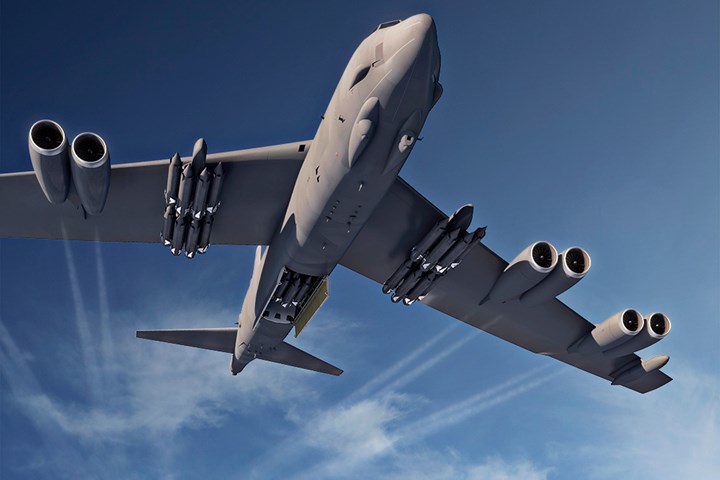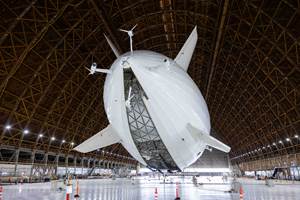Boeing, Airbus announce Q3 delivery results
Year to date (YTD), Airbus has delivered a total of 341 commercial aircraft, Boeing 98 aircraft. Numbers still clearly reflect the negative impact the COVID-19 pandemic has had on the industry.

Photo Credit: Boeing
Mid-October, Boeing (Chicago, Ill., U.S.) and Airbus (Toulouse France) each announced commercial aircraft orders and deliveries for the third quarter of 2020. Numbers still clearly reflect the negative impact the COVID-19 pandemic has had on orders and deliveries, which were also acknowledged in each company’s quarter one results released in April.
Airbus
Airbus reported that it delivered 57 commercial aircraft in September 2020 (14 in April, 24 in May, 36 in June, 49 in July and 39 in August) versus 71 aircraft over the same period in 2019. Year to date (YTD), Airbus has delivered a total of 341 aircraft (18 A220s, 282 A320 Family, 9 A330s and 32 A350s), which is a reduction of around 40% compared to the same period in 2019 (571 aircraft deliveries).
In the first three quarters of 2020, Airbus booked a total of 300 net commercial aircraft orders compared with 127 net orders in the equivalent 2019 period or 256 aircraft in the equivalent 2018 period.
Airbus backlog stands at 7,441 aircraft compared to 7,133 at the same point in time in 2019.
|
A300/A310 |
A220/A320 |
A330/A340/A350 |
A380 |
Total |
|
|
Total orders |
816 |
16,216 |
3,125 |
251 |
20,408 |
|
Total deliveries |
816 |
9,652 |
2,257 |
242 |
12,967 |
|
Aircraft in fleet |
291 |
9,135 |
2,039 |
239 |
11,704 |
Note: Data is valid as of September 30, 2020.
Boeing
Boeing’s report cover major program deliveries across its commercial and defense operations.
According to the report, the company delivered 28 commercial aircraft in the third quarter, and 98 YTD (12 737, 2 747, 20 767, 15 777 and 49 787). These delivery numbers might come as no surprise, considering Boeing’s decision earlier in October to consolidate production of 787 jets at its facility in North Charleston, S.C., and the temporary suspension of production operations in the Puget Sound area and South Carolina earlier this year resulting from the global pandemic.
"We continue to work closely with our customers around the globe, understanding their near-term and longer term fleet needs, aligning supply and demand while navigating the significant impact this global pandemic continues to have on our industry," says Greg Smith, Boeing executive vice president of Enterprise Operations and chief financial officer. "We're taking actions to resize, reshape and transform our business to preserve liquidity, adapt to the new market reality and ensure that we deliver the highest standards of safety and quality as we position our company to be more resilient for the long term. Our diverse portfolio, including our government services, defense and space programs, continues to provide some stability as we adapt and rebuild stronger for the other side of the pandemic."
Major program deliveries during the third quarter were as follows:
|
Major programs |
Third quarter 2020 |
YTD 2020 |
|
Commercial airplane programs |
||
|
737 |
3 |
12 |
|
747 |
1 |
2 |
|
767 |
6 |
20 |
|
777 |
5 |
15 |
|
787 |
13 |
49 |
|
Total |
28 |
98 |
|
Defense, space and security programs |
||
|
AH-64 Apache (New) |
7 |
18 |
|
AH-64 Apache (Remanufactured) |
12 |
44 |
|
C-40A |
-- |
-- |
|
CH-47 Chinook (New) |
4 |
19 |
|
CH-47 Chinook (Renewed) |
2 |
3 |
|
F-15 Models |
-- |
3 |
|
F/A-18 Models |
5 |
14 |
|
KC-46 Tanker |
4 |
10 |
|
P-8 Models |
3 |
9 |
|
Commercial and Civil Satellites |
-- | -- |
|
Military Satellites |
-- | -- |
Note: Delivery information is not considered final until quarterly financial results are issued.
On Oct. 6 Boeing also released its Boeing Market Outlook (BMO) forecast for 2020, projecting near-term challenges in commercial aviation, but long-term resilience.
Related Content
Next-generation airship design enabled by modern composites
LTA Research’s proof-of-concept Pathfinder 1 modernizes a fully rigid airship design with a largely carbon fiber composite frame. R&D has already begun on higher volume, more automated manufacturing for the future.
Read MoreWelding is not bonding
Discussion of the issues in our understanding of thermoplastic composite welded structures and certification of the latest materials and welding technologies for future airframes.
Read MoreComposites manufacturing for general aviation aircraft
General aviation, certified and experimental, has increasingly embraced composites over the decades, a path further driven by leveraged innovation in materials and processes and the evolving AAM market.
Read MoreManufacturing the MFFD thermoplastic composite fuselage
Demonstrator’s upper, lower shells and assembly prove materials and new processes for lighter, cheaper and more sustainable high-rate future aircraft.
Read MoreRead Next
Developing bonded composite repair for ships, offshore units
Bureau Veritas and industry partners issue guidelines and pave the way for certification via StrengthBond Offshore project.
Read MoreVIDEO: High-volume processing for fiberglass components
Cannon Ergos, a company specializing in high-ton presses and equipment for composites fabrication and plastics processing, displayed automotive and industrial components at CAMX 2024.
Read MorePlant tour: Daher Shap’in TechCenter and composites production plant, Saint-Aignan-de-Grandlieu, France
Co-located R&D and production advance OOA thermosets, thermoplastics, welding, recycling and digital technologies for faster processing and certification of lighter, more sustainable composites.
Read More













.jpg;maxWidth=300;quality=90)












